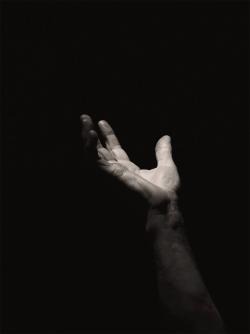The Stone of Destiny
The Coronation Stone of England, the Stone of Destiny, is a clue to the greatest identity crisis in history—and to where the “Scepter of Judah” can be found today.
Seeing Queen Elizabeth II and Prince Philip only a few feet away at Sandringham was a memory I treasured from my time living in England, but visiting old, musty churches was not. As a teenager, I was more interested in playing sports, fishing, and exploring the countryside. That may be why I have little memory of my visit to Westminster Abbey, where I almost certainly saw the coronation throne and the famous Stone of Destiny.
Five decades later, I again visited the Abbey. While I took notice of the ancient wooden coronation throne, the stone itself was missing, having been carted off to Scotland in November 1996. But why mention these memories in Tomorrow’s World? What is the significance of an unattractive 336-pound (152 kg) sandstone block?
According to one Celtic legend, the stone was once the pillow upon which the patriarch Jacob rested at Bethel when he beheld the visions of angels. From the Holy Land it purportedly traveled to Egypt, Sicily, and Spain and reached Ireland about 700 BCE to be set upon the hill of Tara, where the ancient kings of Ireland were crowned. Thence it was taken by the Celtic Scots who invaded and occupied Scotland. About 840 CE it was taken by Kenneth MacAlpin to the village of Scone (“Stone of Scone,” Britannica.com, accessed September 21, 2022).
The stone stayed in Scotland until 1296, when England’s King Edward I absconded with it to Westminster, where he had a specially designed throne built with a platform and cavity to hold the prized rock. Since Edward II’s succession in 1307, with few exceptions, English monarchs have been crowned while seated over the stone.
Jacob’s Pillow: “This Stone Which I Have Set”
There is debate as to whether the current coronation stone is the same one Jacob anointed, but the account in Genesis does raise intriguing questions. After leaving his family to get away from his brother Esau, Jacob laid down to rest one night and received a supernatural dream. He saw angels ascending and descending on a ladder into heaven, and he received promises of greatness. “‘Also your descendants shall be as the dust of the earth; you shall spread abroad to the west and the east, to the north and the south; and in you and in your seed all the families of the earth shall be blessed’.... Then Jacob rose early in the morning, and took the stone that he had put at his head, set it up as a pillar, and poured oil on top of it.” Then he declared, “And this stone which I have set as a pillar shall be God’s house, and of all that You give me I will surely give a tenth to You” (Genesis 28:14, 18, 22).
Why did Jacob set up a rock as a pillar? Why did he anoint it? Why did he say it represented “God’s house”? Whether today’s stone is the original Jacob’s pillar stone or a counterfeit, its historic significance to the Irish, Scots, and British is indisputable. It is the pinnacle of Scotland’s treasures and is protected as such.
On June 2, 1953, Queen Elizabeth II was crowned sitting over this Stone of Destiny. Then, “in 1996, the stone was officially returned to Scotland. Today, it is one of the priceless treasures on display in the Crown Room [of Edinburgh Castle], visited by millions of people each year. The stone will only leave Scotland again for a coronation in Westminster Abbey” (“The Stone of Destiny,” Edinburgh.scot, accessed September 21, 2022). It is remarkable how highly esteemed this rock is, but what is its real significance? Is there more than legend behind it?
The Prophecy About the Line of David
How many Bible students understand God’s promise to King David of Israel of an everlasting human dynasty? “When your days are fulfilled and you rest with your fathers, I will set up your seed after you, who will come from your body, and I will establish his kingdom. He shall build a house for My name, and I will establish the throne of his kingdom forever. I will be his Father, and he shall be My son” (2 Samuel 7:12–14). Some assume this refers only to the Messiah, but notice: “If he commits iniquity, I will chasten him with the rod of men and with the blows of the sons of men. But My mercy shall not depart from him…. And your house and your kingdom shall be established forever before you. Your throne shall be established forever” (vv. 14–16).
David’s throne continued uninterrupted for 400 years, from his son Solomon until the house of Judah fell in 586 BC. Many assume it ended with Zedekiah (2 Kings 25:7), but God had made this remarkable promise through His prophet Jeremiah a year earlier:
For thus says the Lord: “David shall never lack a man to sit on the throne of the house of Israel”…. Thus says the Lord: “If you can break My covenant with the day and My covenant with the night, so that there will not be day and night in their season, then My covenant may also be broken with David My servant, so that he shall not have a son to reign on his throne…. As the host of heaven cannot be numbered, nor the sand of the sea measured, so will I multiply the descendants of David My servant and the Levites who minister to Me” (Jeremiah 33:17, 20–22).
Most theologians believe David’s dynasty ceased to exist 600 years before Christ came, but did Jesus take over the throne of David during His first coming? Clearly, He did not—but He is destined to do so (Luke 1:32–33). Is God unfaithful? Did he lie to David and to the people of Jeremiah’s day?
Far from it. As explained in my article beginning on page 16, the nation of Israel split into two kingdoms—the southern house of Judah (the Jewish people), and the northern ten tribes of the house of Israel. Notice this important detail in the verses above: “David shall never lack a man to sit on the throne of the house of Israel” (v. 17). The kingly line in the house of Judah ceased with King Zedekiah in 586 BC. The Bible confirms that his sons were killed, but his daughters were not! They were left behind in Judah, then taken to Egypt (Jeremiah 41:10; 43:5–7).
Irish history records the remainder of this story. It tells of the prophet Jeremiah and his scribe Baruch coming to Ireland after the fall of Judah with a young princess and the coronation stone, called in Gaelic lia fail. In ancient Irish records, the princess was named Tea Tephi. She married the son of the High King of Ireland. Their descendants reigned from Tara in Ireland for many centuries. Later, in the days of Kenneth McAlpine, they transferred their place of rule to Scone in Scotland. This same dynasty continues on down to today in the person of Queen Elizabeth II, a direct descendant of Tea Tephi and her husband. God has fulfilled his promises to King David just as He said! (John Ogwyn, The United States and Great Britain in Prophecy, p. 34).
Truth is often stranger than fiction. Queen Elizabeth II’s death has thrust to the fore an ancient ceremony and rock. As reported by the BBC, “Historic Environment Scotland (HES), which manages Edinburgh Castle, announced the stone would be used in King Charles III’s coronation before being returned to the castle’s Crown Room” (“Stone of Destiny to return to Westminster Abbey for coronation,” BBC.com, September 12, 2022). Many of you may see it beneath the King during his upcoming coronation.
Today, the British-descended and American peoples do not know their identity, but the Stone of Destiny and the enduring English throne are clues to that vital truth. To learn the full story, contact our office nearest you and order a free copy of The United States and Great Britain in Prophecy, or read it online at TomorrowsWorld.org.






